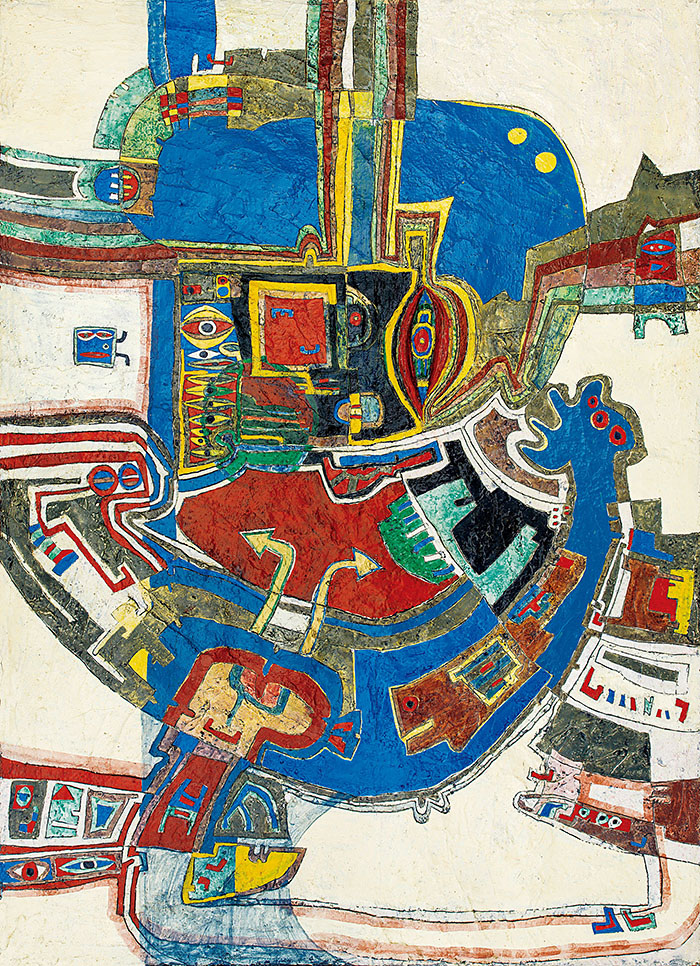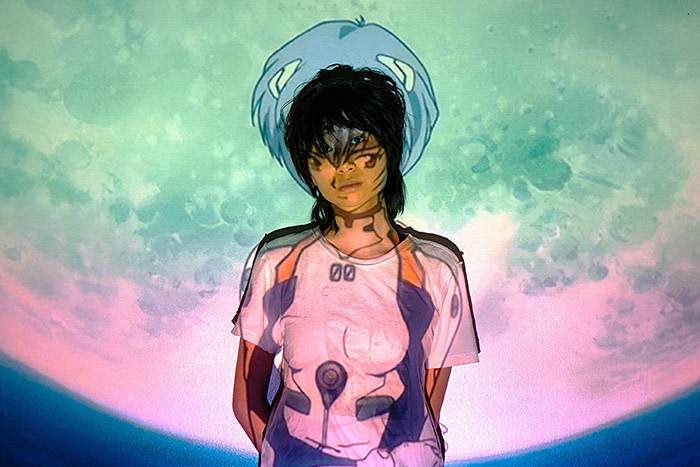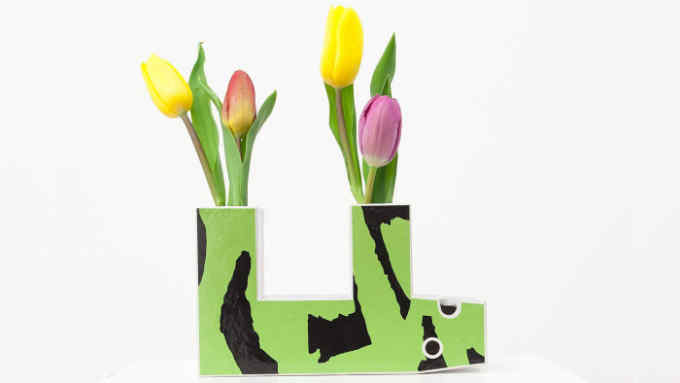Playboy’s bathroom Lichtenstein for sale
Roula Khalaf, Editor of the FT, selects her favourite stories in this weekly newsletter.
Did a prized silverpoint Raphael drawing sell under the radar at Drouot Estimations in Paris earlier this month? Someone is certainly betting that it did. “The Holy Family with St John the Baptist child”, catalogued as by Raphael’s pupil Giovanni Francesco Penni (1488-1528), carried a pre-sale estimate of between €5,000 and €7,000 on April 12 yet sold, in a heated auction, for €1.13m. “It is perfectly Raphael,” says New York-based Old Masters expert Paul Jeromack, though he has yet to see the work beyond some high-resolution photographs.
Not everyone is convinced — a complete Raphael drawing of such a substantial subject would normally knock the socks off immediately, rather than being open to debate, but certainly the general view is that it is far better than anything else fielded by Penni and therefore worth a longer look. The task now will be to get scholars involved in the heated business of possible reattribution. In the meantime if, as rumoured, the buyer is based outside of France (probably the US), there’s the question of whether the Ministry of Culture will declare the drawing a “national treasure”. This would restrict its export for a substantial period of time, enabling the country’s museums to take a look for themselves.
After four years at the helm of Photo London, founders Michael Benson and Fariba Farshad are stepping down as directors of the fair. They will continue to be involved at a more strategic level and have smartly put a photography expert — Roderick van der Lee, founder of Amsterdam’s Unseen Photo Fair in 2012 — in charge of the day-to-day running of the fair.
“I’ve always kept a close eye on Photo London. It was launched as an exceptional competitor while I was at Unseen,” says Van der Lee, who also worked at the city’s Foam photography museum between 2009 and 2011. One key difference that he welcomes is the London fair’s commitment to older works — the Amsterdam fair limits itself to photographs taken in the past three years. “There is now a broader rediscovery, and growing values, for historic works,” Van der Lee says.
Photo London had its doubters when it opened in 2015. “People said there were no collectors, no market in London,” Farshad says, and indeed cities such as New York and Paris dominated the photography field. Since then, interest has steadily grown in the UK capital, where solo-artist museum shows currently include Don McCullin at Tate Britain and Martin Parr at the National Portrait Gallery.
Farshad and Benson are not giving away details on the development plans they are considering for the fair, whose fifth edition opens on May 16, but Benson admits: “We’ve used every available inch of space at Somerset House.” The fair was launched with 85 galleries and will host 114 this year. He underlined their commitment to the prestigious, if sprawling, venue but did not rule out seeking an additional outpost in London.
Also on the move is Victoria Gelfand-Magalhaes, a hotshot director at Gagosian gallery for 15 years, who joins Lévy Gorvy as president, Europe. News of her decision emerges shortly after Gagosian announced a shake-up of its business, consisting of the creation of an art advisory arm and a new management structure with a formalised board of directors that included Gelfand-Magalhaes. She insists that her new direction has nothing to do with the new-look Gagosian gallery. “The timing was funny but a decision like this doesn’t happen overnight,” the Belarus-born Gelfand-Magalhaes says, confirming that she leaves “on excellent terms” with her former employer.
Lévy Gorvy runs three spaces in New York, London and most recently Hong Kong, plus a joint venture in Zurich, so it amounts to a much smaller operation than Gagosian’s 16-gallery empire. Co-founders Dominique Lévy and Brett Gorvy are both New York-based. “They have a less-is-more approach, but the model is still ambitious and global with powerful people at the helm,” Gelfand-Magalhaes says. Her new remit includes expanding the gallery’s primary programme as well as getting involved in its advisory business, officially established when Lévy Gorvy was formed in 2016. “There is a tonne of possibilities for her,” Lévy says, reiterating that the appointment is not about opening more spaces. Gelfand-Magalhaes joins at the end of the month.

While western galleries race to open in Asia, Hyundai gallery — Korea’s oldest contemporary art dealership — is going the other way and opens in Tribeca, New York this week. Gallery director Do Hyung-Teh, whose mother founded Hyundai in Seoul in 1970, says that establishing a space outside of Korea is less to do with the political uncertainties at home, which he says have “always existed”, and more about the dynamics of the art market. Attention to Korean art has been growing these past six or seven years, now beyond its best-known Dansaekhwa (meaning “monochrome”) artists, and it’s time to build on this interest more internationally, Do says.
Hyundai’s New York showroom will operate on an appointment-only basis but is opening its doors on Greenwich Street between April 30 and May 4 to coincide with the Frieze fair (May 2-5). On show will be Kwak Duck-Jun, a Korean artist who has always lived in Japan, including some of his prized canvas works from the 1960s (priced between $140,000 and $200,000). The artist made only 37 of these and 17 are in national museum collections in Korea and Japan, says Do.

Much of the contemporary art market action shifts to Belgium this weekend, clustered around the 37th edition of Art Brussels (Tour & Taxis, April 25-28). The grungy, alternative event Poppositions coincides, this year under the theme “Capital of Woke”, to field works through 25 galleries that “resist capitalised ideologies”, according to organisers. Artists include France’s Alice Hauret-Labarthe (Pierre Poumet gallery), who brings an installation based around a suspended bed — visitors are encouraged to take a rest — to remind of “the importance of sleeping and mental comfort in a world that is quite turbulent,” the artist says. Other issues addressed include the effect of multinational corporations (Margaret Haines, Lily Robert gallery) and an investigation of the gift economy courtesy of The Self Luminous Society (“a group of linguistic-metaphysic-mystic-lunatics”, according to the Poppositions website). Poppositions changes venue each year and this time holds its eighth edition in the striking Le Centre Tour à Plomb-Hageltoren, a former gunpowder factory.
It’s less “woke”, but lovers of Pop Art and playboy mansions will delight to see that a porcelain enamel painting by Roy Lichtenstein that once adorned the bedroom suite of the late German millionaire Gunter Sachs — briefly the husband of Brigitte Bardot — is coming back to market. Lichtenstein made “Composition” for Sachs, together with a panel of “Leda and the Swan”, to go under a double-sink and a bath in his St Moritz hotel penthouse in 1969, the year when he and Bardot divorced. According to the Lichtenstein Foundation, “Composition” was installed upside-down under the Swiss sinks (the moon on the central strip should reflect in the water).
In 2012, “Composition” sold out of Sachs’ collection at Sotheby’s, London for £541,250 (with fees, then equivalent to $853,841) and has been sold twice since. It comes back to the auction house’s contemporary day sale in New York with an estimate of $900,000 to $1.2m (May 17).
Follow @FTLifeArts on Twitter to find out about our latest stories first. Subscribe to FT Life on YouTube for the latest FT Weekend videos

Comments